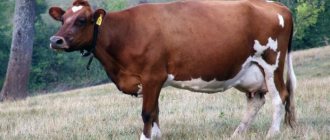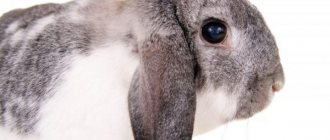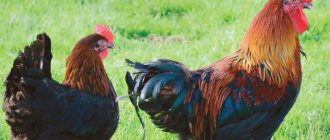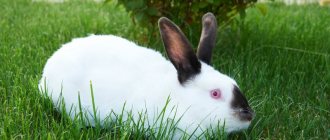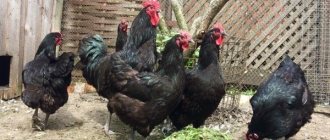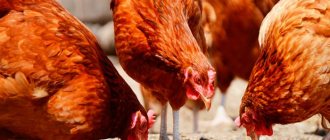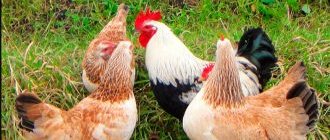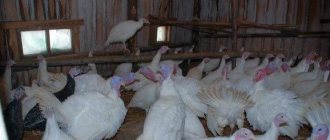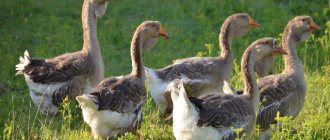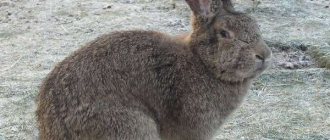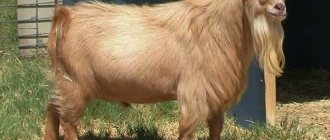History of the breed
This color of cattle in the form in which it exists appeared, by historical standards, “yesterday” - it was officially presented in all its glory and blew up the Internet in 2011. And the first representative appeared more than twenty years ago. The plush cows come from Iowa, a state renowned throughout the United States as “the most agricultural county.”
This color is bred by farmer Matt Lottner, who previously bred only meat and dairy breeds. Now the “parent” breeds only these furry animals. And he even wrote a book, “This is Much More Than a Teddy Cow,” about these beauties.
While it has not yet been recognized by experts as a species, representatives of this color are already being demonstrated at various exhibitions and fairs. They have become the adornment of any animal not in meat or milk, but in their appearance and uniqueness.
Signs of a Teddy Cow
| A well-fed animal at the withers grows up to 135 centimeters. |
| Cow – 500 kg, bull – 800 kg. |
| Various: brown, red, black, white, milky; combination of primary colors and spotting. |
| None. |
| Not suitable for milking. |
| Rectangular and wide body with rounded sides. The head is small, on a wide neck. The scruff merges into a straight back. The back is raised and ends in a long, shaggy tail. There is a tassel at the end of the tail. |
| Short and straight legs, like columns, are completely covered with dense hair of the same length. |
| Long, soft, delicate, reminiscent of plush. |
Cows need to be washed frequently, weekly and up to several times a day during the show season. Without professional grooming, the coat will mat or look like all long-haired breeds. For drying, use only professional hair dryers with special attachments. Often the wool is even tinted for added brightness.
Particular attention is paid to the nutrition of the stuffed cow. To ensure a healthy coat, they are fed special food and their diet is carefully prepared.
We can say that the cow is constantly on a diet
Many specialists are working on its development
We can say that the cow is constantly on a diet. Many specialists are working on its development.
Animal rights activists demand that furry cows not be slaughtered for meat, but farmers are not interested in breeding cows solely for exhibitions. Perhaps soon the plush cows will be equated with cats and dogs. They will be kept in apartments as pets.
In livestock farming, cows are divided into beef and dairy breeds. But there is also a cow that is rarely classified as one of these types because of its decorative purpose. We will tell you about the amazing plush breed of cows in our article.
Breeds of cows with thick hair have been bred for a long time. For example, the hairy Scottish cow, a symbol of the country, has been known since the 6th century. She has thick bangs and long fur to protect her from the harsh high mountain climate. But the plush breed is the only one whose legs are also covered with a thick layer of hair.
This unique plush (or fluffy) cow really looks like a stuffed toy. It was first introduced on the farm of Matt Lottner from Iowa, who has been breeding and improving them for more than twenty years. The farmer decided to surprise the world and he succeeded. In 2011, fluffy and funny little cows created a real sensation on the Internet. And in 2013, at the annual fair, his bull, Texas Tornado, took first place. The popularity forced the farmer, who previously dealt with meat breeds, to switch exclusively to raising decorative fluffy cows and even write a book.
The fluffy cows were started by a cute record-breaking bull. Some believe that the farmer did not specifically breed the breed, but only achieved an unusual result thanks to a special process of washing, cutting and styling. On the uniform they are really given an outlandish look, also thanks to styling products. As a result, the plush bull looks larger and the cow looks cuter than in its original form.
Farmers say that Angus, Hereford and Highlanders are quite suitable for creating soft styling and unusual haircuts. Employees at Lottner's farm use several combs with attachments and brushes when breeding, after which special oils and mixtures are applied to the wool. As a result, the fur shines and becomes very soft. The company secret is neoprene wraps.
When evaluating at shows, experts take into account not only typical breed standards, but also individual characteristics. Now the highest places are occupied by Heat Wave and Monopoly bulls, and calves from these sires are especially valued among breeders. American farmers, however, are working to ensure that the “fluffiness” of cows remains throughout their lives.
Nowadays, plush cows are bred mainly to participate in various exhibitions, where they occupy high places. The cream of the crop goes to the kids, since adults with well-formed muscular frames are no longer so cute and plush.
Features of the fluffy breed of cows
This unusual creature appeared by crossing meat individuals - Highland, Angus and Hereford. Her calling is to amaze the eyes of others and decorate the farm. This is a purely decorative type.
Only young animals have a cute “toy” appearance. Adult individuals lose their main feature - the softness of the coat, and they become overweight heavyweights. Therefore, the service life of this species on the “podium” of exhibitions is quite short. As exhibition material, fluffy cows are used only up to a year. An adult can only show off in the pen and be the best friend of children.
Characteristic
Despite the fact that long-haired cows of the Highland, Dutch, and Red Steppe breeds existed before, the plush cows differ from their relatives. The decorative animal is completely covered with soft fur, which gives the pet the appearance of a neat three-dimensional rectangle. The breed was bred to attract attention to farm products and decoration of the estate.
Unfortunately, the spectacular appearance of the animal does not last long. After the cow reaches the age of 1 year, the structure of the pet’s coat changes not for the better. The plant cover of the horned beauty loses its softness and silkiness, the animal turns into an overweight, shaggy creature. The cow retains its hair, and with good care the appearance of the animal remains quite attractive, but the pet is not suitable for participation in exhibitions. Thanks to its docile nature, the plush cow will delight adults and children for many years.
See also
Description and characteristics of Montbeliarde breed cows, their contentsRead
Animals mature late. Bulls reach their maximum weight only at 2.5 years of age. Heifers are ready to reproduce by 38 months. The long period of animal development is fully compensated by the duration of reproductive age. Cows can bear offspring for 18 years.
Conditions of detention
The quality of their wool is affected by their diet. Therefore, it is very important that the animal’s food contains sufficient amounts of vitamins, minerals and nutrients.
As with conventional meat and dairy breeds of cows, the basis of the diet of “toy” cows is made up of plant feed. But this is not enough to saturate the animal with the necessary amount of vitamins, which affects the quality of the wool. For a balanced diet, dry granulated food is used. The seasonality of some components of the feeding system should be taken into account. But in any case, 60% of the total feed is fiber - this is fresh grass in the summer, and hay the rest of the time. The rest of the feed is bone meal, mineral supplements, and vitamins, which are included in the concentrated feed.
When feeding young animals and heifers before and after calving, their special needs must be taken into account. To feed calves, they use their mother's milk and mainly dry feed. But milk is usually not enough, and you have to use “powdered” milk - special powdered mixtures rich in micronutrients. And for proper gestation of the fetus and its subsequent feeding, the cow is fed granulated grain feed. Concentrated feed must include soybeans, beets, bran, bread and brewer's yeast, and cassava. But it should be remembered that transferring these animals to artificial feeding (only concentrated feed) can significantly harm their health.
Recommended daily diet for an adult:
| Type of feed | Amount of feed in kg |
| Plant fiber | 8 |
| Dry vegetable fiber, straw | 4 |
| Grain and forb food | 5 |
| Fodder root crops | 4 |
| Bran | 2 |
| Concentrated feed | 1,5 |
| Meal, cake, legume flour | 1 |
| Bone flour | 1 |
Another factor that directly affects the quality of wool is the care of the cow’s skin. In everyday life, the cow needs to be bathed at least once a week. And before exhibitions and competitions, participants are washed several times a day. Water procedures are carried out only with special shampoos and conditioners. To give the coat a plush appearance, it is cut, regularly combed with special combs, before exhibitions, nourishing oils are rubbed in, curled with curling irons and wrapped with neoprene fabric. The coat is not dried naturally, only with a hairdryer. And to make the wool brighter, it is often tinted.
Features of animal care
The main advantage and distinctive feature of plush cows is their fur. It is very pleasant to the touch, its softness and tenderness is similar to plush, so the animal is often compared to the wool of South American alpacas.
During the breeding process, American bulls are provided with a special diet, thanks to which the fluffy effect is achieved. The diet must be balanced - it requires the presence of the entire set of vitamins and minerals. However, this is not enough. It is necessary to provide cows with full hairdressing services, since free combing of wool, absence of tufts on the surface, and no matting effect are all the main requirements for appearance.
Careful care will be required if you plan to participate in an animal show. After all, the pet’s fur should lie perfectly without any external defects. Therefore, under normal conditions, fluffy decorative cows should be washed weekly. But on the eve of the competition, they will have to provide them with bath treatments every day. You should not allow the wool to dry out naturally, because in this case it will simply mat. You need to dry the plush on these cows using a special hair dryer.
Important! Already on the day of competitions and exhibitions, it is necessary to visit a specialist who will help to properly lay the wool using special oils and sprays. Judges will evaluate both the skeletal structure and the condition of the animal's coat.
There is no practical purpose for establishing this breed - they are not used for meat and dairy farming. However, the demand for decorative cows is increasing every year. The rather high cost of individuals does not reduce their popularity - from 5 thousand dollars to several tens of thousands of US dollars. In addition, it is worth taking into account the exactingness of animals in care - they must be regularly washed, combed, styled with special means, and protected from the negative influences of the external environment. Professional breeders are constantly working on the genetics of plush cows, trying to achieve a “plushness” effect at the genetic level that would persist throughout the animals’ lives.
It's time for the podium
These funny and cute creatures have rightfully earned their right to parade in front of the public and win the love and recognition of others. Burenki take part in various livestock exhibitions and presentations. They surprise with the quality characteristics of their coat and color. The resemblance to huge children's soft toys allows the cows to take first prizes. And at fairs, a plush cow calf can cost up to 75 thousand dollars.
When evaluating a “candidate for a medal”, the jury pays attention to: the quality of the coat (it should not dry out and fall off), the structure of the skeleton. To take first place and please the audience, an individual must strictly meet the basic characteristics. The individual should not be skinny, with protruding bones of the pelvis and spine, and should fully correspond to the proportions of the body (short legs, small head and massive body).
Description of appearance
The appearance of the animal is striking not only with the plushness of the cover on the body, but also with the variety of colors, which come in:
- red-brown;
- black;
- light brown;
- black and white.
Cows are distinguished by a medium-sized head, which is located on a fairly wide neck. The wide body has a rectangular appearance, and the sides are characterized by roundness. The smooth flow of the nape into the straight back provides the original shape of the Iowa bull, which is complemented by a slight elevation of the rear part of the body. At the end of the long tail there is a shaggy tassel.
The breed in question is not large in size - at the withers the individual does not exceed 135 cm. However, the body weight is quite large:
- The bulls weigh 800 kg;
- The weight of the heifers reaches 550 kg.
Attention is drawn to the limbs of the animal, which are covered with a large amount of fur. Therefore, the legs are similar to posts; they look short and thick. However, this fact does not spoil the picture; on the contrary, the animal acquires notes of grace. Both bulls and heifers are polled, i.e. they don't have horns. In this regard, the animal does not demonstrate aggressiveness either in behavior or in appearance - there are no sharp lines or sharp angles in the outlines of its body.
Important! The udders of these cows are not intended for milking, so the breed cannot be considered either as a meat or dairy breed. This ornamental animal is only capable of feeding its offspring.
Is it possible to buy this cow?
In its homeland of Iowa, the cost of a plush calf starts at $5,000. Many people want to buy this “soft toy” not so much because of their reverent attitude towards it, but rather because of the desire to make money from it. But it’s worth thinking in advance about how much you need to invest in this creation in order to participate in a fair or exhibition.
On top of that, the animal is not so easy to acquire - breeders deliberately do not allow the breed to spread outside the state of Iowa. This is so because the improvement of the suit is still ongoing. Of course, you can try to look for prices on the Internet, but all the animals offered are contraband or very similar in appearance to Highland cattle.
Important
It is very difficult to care for the hair of this cow. In addition to weekly bathing, you need a large set of care products - foams, sprays, oils and more.
Advantages and disadvantages
Considering all the numerous nuances associated with breeding plush cows, the question arises: is it worth breeding them at all if there is no particular benefit from them: no milk, no meat, and even labor-intensive care for capricious fur.
Of course, the disadvantages of keeping animals include the large amount of time and money that goes into maintaining their appearance and special compliance with all conditions. In addition, cows do not perform any other functions other than decorative ones. But this is if you look at it from the perspective of an agricultural worker. But from the side of a businessman-entrepreneur, this is a very profitable business. And the efforts and money spent on her care will be more than rewarded when the fluffy beauty takes first place at the fair.
Prizes usually mean a large monetary reward.
Sometimes people are willing to pay a tidy sum for the opportunity to purchase such a cow. And this, undoubtedly, is an opportunity for farmers to make good money. Indeed, recently these furry creatures have become increasingly popular not only among farmers-distributors, but also among ordinary people. There are animal lovers who keep plush cows in their homes like a regular cat or dog. But you need to understand that while admiring the beauty of your pets, you will have to pay a lot of attention to them.
There is still debate about their hammering; there are different opinions on this matter. Some believe that killing such cute cows is blasphemy. Others, on the contrary, dreaming of enjoying an exclusive delicacy, are ready to shell out a lot of money for the opportunity to try the meat of such an unusual animal.
But getting the coveted cow is not so easy. Since this breed is not officially recognized, its distribution outside the state of Iowa is not yet possible. However, breeders continue to improve this variety, trying to achieve its recognition as a true separate breed.
That is why specialist breeders from all over the world are showing even more interest in these plush creatures.
Noise and controversy
There has been a lot of controversy surrounding the appearance of this furry coat on the world stage. The appearance of the plush cow, the photo of which shook the entire Internet, turned out to be so cute and cartoonish that animal rights activists immediately became worried. There was concern about banning the raising of these fluffies for slaughter. After all, can you really make a steak out of this cute creature? This is simply unacceptable!
It is also worth making sure that a stuffed cow is not purchased just for the sake of prestige. After all, the animal requires increased attention, and the care and maintenance of this species is very expensive. There is always a risk that owners will quickly lose interest. Be responsible when choosing these kinds of pets.
Animal rights activists demand a ban on the slaughter of these animals, since they believe that they can be brought into the domestic order and bred like cats and dogs, and not make money from them in the event of slaughter. A certain category of animal rights activists believes that if there is a dwarf breed of horses, then soon will breed dwarf plush cows that will closely communicate with their owners within private homes.
Development prospects
Plush pets continue to win the hearts of farmers and livestock breeders. However, the high material costs of acquiring and maintaining such animals do not make breeding plush cows a popular business. The owners of such animals make profit mainly from exhibitions and the sale of meat. But recently, an animal welfare organization has come out against the slaughter of such livestock for meat. If the slaughter of stuffed cows is banned, there will be virtually no profit from keeping these animals.
Perhaps soon stuffed cows will be as much a pet as a cat or dog. There is already a breed of dwarf decorative horses.
Diseases and prevention
Like regular cows, plush cows sometimes get sick.
- Cellulitis of the corolla. The disease is an inflammation of the hoof tissue. Trouble overtakes the pet as a result of injury to the hooves. When pathogenic microbes enter the wound, the tissue becomes inflamed and swells. Treatment consists of applying alcohol compresses and washing the wound.
- Laminitis The disease is expressed in the accumulation and stagnation of blood and fluid in the affected tissues of the hoof. The animal limps, and later the sore spot takes the form of an open wound. The veterinarian trims the sore hoof and washes out the areas of inflammation.
- Viral diarrhea. If treatment is delayed, the dangerous disease threatens mass death of animals. The cause is a viral infection. As a result of the development of the disease, the animal's intestines become inflamed. Treatment is carried out by a veterinarian.
Tips and tricks from experienced livestock breeders and veterinarians
To obtain shiny, beautiful and soft wool, farmers advise resorting to neon wrapping. There is no need to let the wool dry naturally, as there is a high probability that it will mat. It is recommended to dry the cows using a special hair dryer. During exhibitions, it would not be a bad idea to resort to the use of foams, mousses and wax for a beautiful, well-groomed appearance.
Sources
- https://7ogorod.ru/krupnyj-rogatyj-skot/plusevye-korovy.html
- https://stroy-podskazka.ru/korovy/porody/plyushevaya/
- https://moloko-chr.ru/articles/byk-i-korova/plyushevaya-korova-osobennosti-porody-i-soderzhaniya.html
- https://GoFerma.ru/zhivotnovodstvo/korovy/volosataya-korova.html
- https://oselhoze.ru/zhivotnovodstvo/korovy/plyushevaya-korova
- https://fermers.ru/porody/krs/pushistaya-korova
- https://selhoz.guru/skot/plyushevaya-korova
- https://pro-selhoz.ru/korovyi/neobyichnaya-poroda-iz-ayovyi-plyushevaya-korova/
- https://FarmCraft.su/skotovodstvo/volosataya-korova.html
[collapse]
